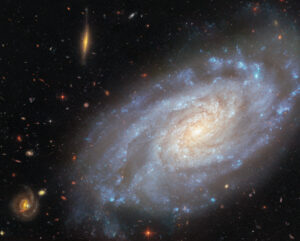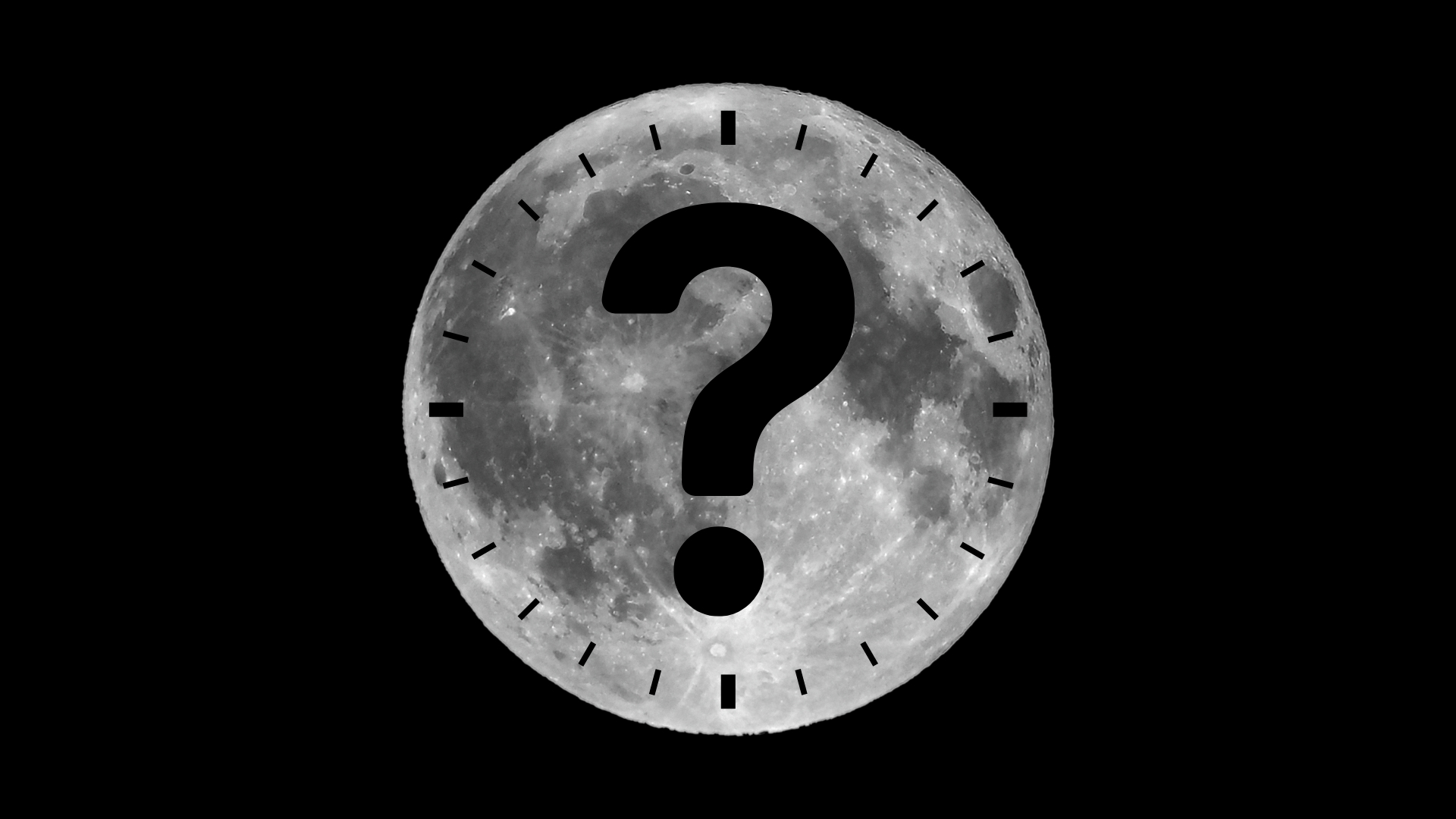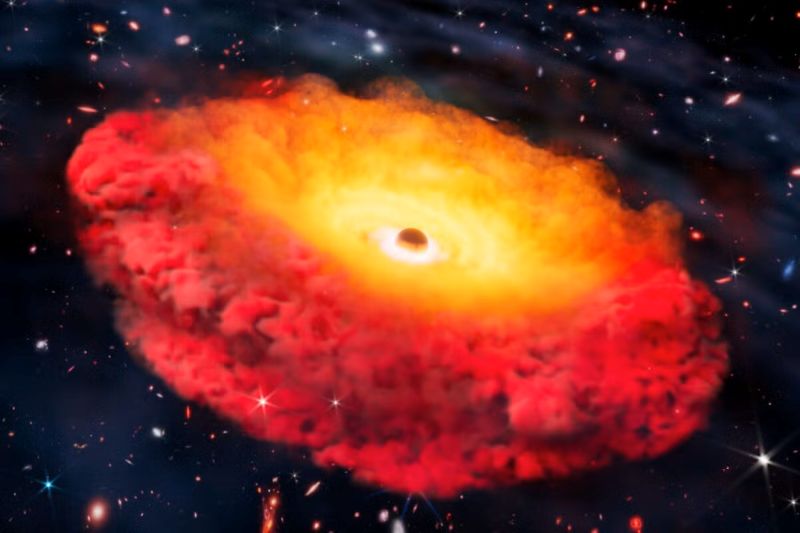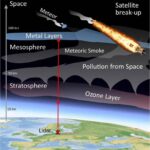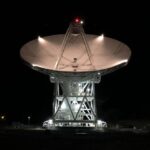Now Reading: It’s time again for Perseid meteors!
-
01
It’s time again for Perseid meteors!
It’s time again for Perseid meteors!

August means the Perseids: the annual shooting star spectacular reaches its peak to wow meteor enthusiasts with abundant bright events, writes Astronomy Now’s Night Sky manager Mark Armstrong.
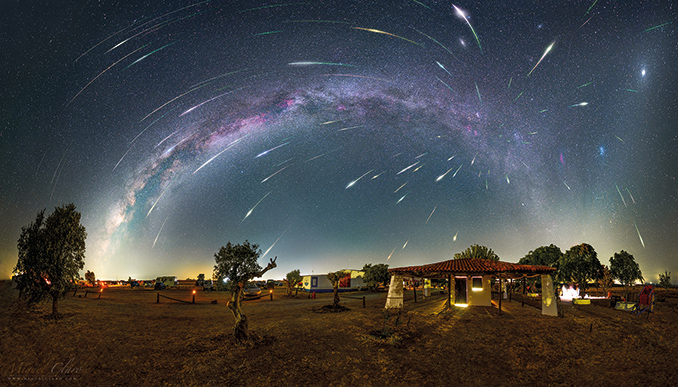
Down the decades, the Perseid meteor shower has become a firm favourite on the observing calendar, with astronomical groups gearing up to make the most of the perennial display of shooting stars. The big meteor showers are among the most popular events for astro-friends to come together, hoping to see meteor-a-minute rates, whether you are in it for the science or just to have some fun.
The Perseids are renowned for producing bright events, interspersed by an occasional thrilling fireball to lift flagging spirits in the small hours. This characteristic of the Perseids will help for this month’s show, as glare from a pesky Moon, in a waning gibbous phase just three to four days past full, will drown out many of the fainter meteors.
What are meteors?
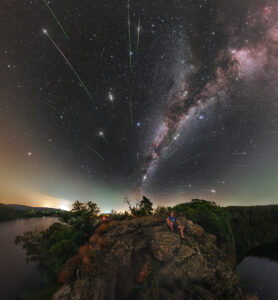
Our late and much missed colleague Neil Bone was for many years the director of the British Astronomical Association’s Meteor section. Here’s his take on where meteors come from: “Meteors are the short-lived (one- to two-tenths of a second) streaks of light seen in the night sky as ‘shooting stars’. They occur, typically, in a layer of atmosphere between 80–100 kilometres altitude where small incoming particles – meteoroids – are destroyed, essentially by frictional heating, on their high-velocity (11–76km/s) entry. Most meteoroids are small, perhaps just 2–5mm in diameter for those producing meteors in the naked eye range, and are of very low density.”
Perseids linked to Comet 109P/Swift–Tuttle
When comets wing their way through the inner Solar System, their surfaces are heated by the Sun and they become more active. Some cometary material is lost and particles ejected, which over time spread out around along the comet’s orbit around the Sun. When Earth intersects this stream of particles then a number of them enter our upper atmosphere, vaporising to form the streaks of light we see as meteors.
Each meteor shower is linked with a ‘parent comet’, with periodic comet 109P/Swift–Tuttle being associated with the Perseids. This comet has a 133-year period and last returned to the inner Solar System in 1992. Enhanced Perseid rates were seen in the early nineties, which corresponded with this return.
When and where to look
Perseid activity is normally confined between 17 July and 24 August, with this year’s peak expected at about 20:00 UT on 12 August. Your best chance to see meteors is on the nights of 11/12 and 12/13 August, and you should be prepared to stay up past midnight into and past the small hours, if at all possible.
The shooting stars belonging to the shower (i.e, not sporadic or random meteors, which occur frequently every night) can be traced back to an area of sky called the radiant. This position reflects the intersection between Earth’s orbit and that of the meteoroid stream.

The Perseid radiant lies in the far north of Perseus (around 4° of the magnificent Double Cluster near magnitude +4.6 eta Persei), a location close to the boundary with Cassiopeia. This area of sky is circumpolar (never setting) from the UK, but lies low in the north-eastern sky as darkness falls. Although the radiant is now around 25 degrees up from London at 10pm BST, that’s still quite close to the north-northeastern horizon. Those Perseids bursting out 20° or more below the radiant will be hard to spot or be missed entirely below the horizon.

The radiant climbs to a decent altitude of 50 degrees or so by 2am BST, when the areas of the sky from where Perseids are more likely to appear will be much better placed than prior to midnight.
Do not peer intently at the spot in the sky where the radiant lies, though this may seem counter-intuitive. Perseid meteor trails or streaks here will appear short and therefore harder to see. You will see many more shooting stars if you observe an area of sky 30-40 degrees from the radiant (from where, meteor streaks may appear longer) and around 50 degrees above the horizon.
What can I expect to see?
Under a haze-free sky at a dark-sky viewing site on a moon-free year, observers can expect to see between 50 and 70 Perseid meteors each hour near the peak. In towns or cities, observed rates may still be around ten per hour in the early-morning hours when the radiant is high. Owing to glare from the Moon, observed rates of fainter Perseids will be curtailed.
Good luck!
Stay Informed With the Latest & Most Important News
Previous Post
Next Post
Previous Post
Next Post
-
 012024 in Review: Highlights from NASA in Silicon Valley
012024 in Review: Highlights from NASA in Silicon Valley -
 02Panasonic Leica Summilux DG 15mm f/1.7 ASPH review
02Panasonic Leica Summilux DG 15mm f/1.7 ASPH review -
 03How New NASA, India Earth Satellite NISAR Will See Earth
03How New NASA, India Earth Satellite NISAR Will See Earth -
 04And Thus Begins A New Year For Life On Earth
04And Thus Begins A New Year For Life On Earth -
 05Astronomy Activation Ambassadors: A New Era
05Astronomy Activation Ambassadors: A New Era -
06SpaceX launch surge helps set new global launch record in 2024
-
 07Space Force plans new ‘Futures Command’ amid pressure to speed up modernization
07Space Force plans new ‘Futures Command’ amid pressure to speed up modernization














